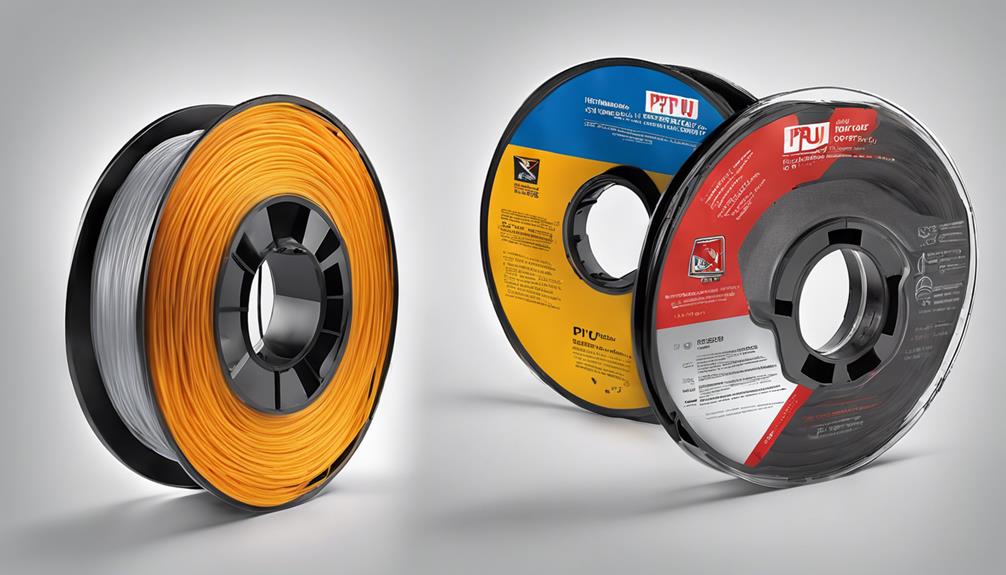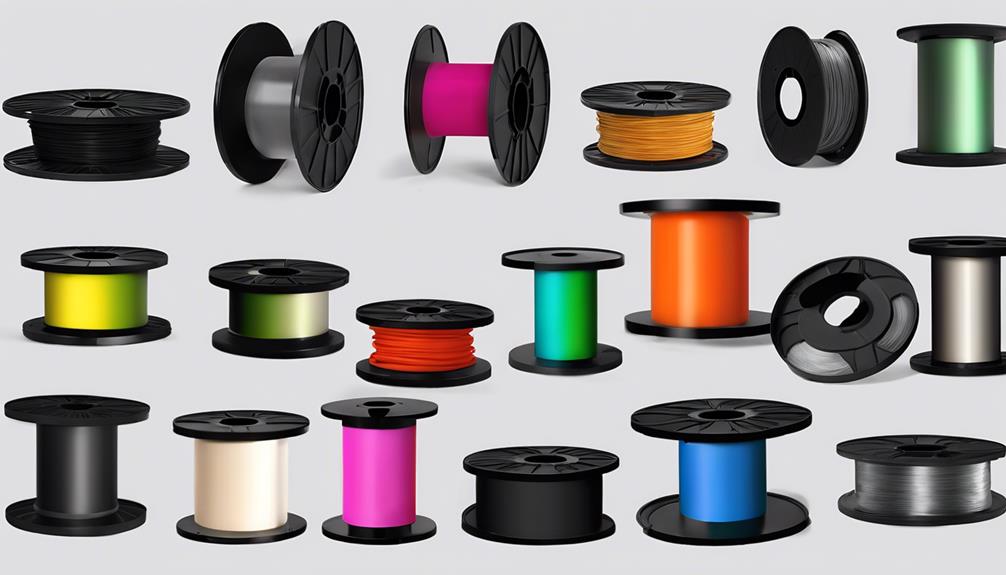Selecting the right TPU filament for printing gaskets is a crucial decision that can greatly impact the final product's performance. The versatility and unique properties of TPU filaments make them ideal for creating gaskets that require flexibility, durability, and resistance to various chemicals. When exploring the wide range of TPU options available, understanding the key factors to take into account in filament selection can make all the difference in achieving excellent results. Stay tuned to discover the essential guidelines and expert insights that can help you master the art of printing gaskets with TPU filaments effectively.
Understanding TPU Properties for Gaskets

TPU's unique properties make it an excellent choice for 3D printing gaskets due to its flexible nature, high durability, and resistance to abrasion and wear. These properties allow TPU to create soft, flexible prints that can withstand the demanding conditions gaskets often encounter.
With its ability to resist abrasion and wear, TPU guarantees longevity in its applications. Additionally, the flexibility of TPU enables gaskets to conform to irregular surfaces, providing a secure seal. Its high durability further enhances the reliability of gaskets, making TPU a preferred material for various sealing applications.
When considering materials for 3D printing gaskets, TPU stands out for its unique combination of flexibility, durability, and resistance to wear and tear.
Importance of High-Temperature Resistance
Given the demands of applications where gaskets are utilized, the capability of materials to withstand high temperatures is a pivotal factor to guarantee excellent performance and longevity.
In the case of TPU filaments, high-temperature resistance is a key attribute. TPU can resist continuous temperatures up to 110°C, with a melting temperature of 225°C, ensuring stability even at elevated temperatures.
Despite a glass shift temperature of 60°C, TPU remains flexible, preventing deformation under heat stress. This characteristic makes TPU suitable for gaskets that require high-temperature resistance, ensuring that the material can maintain its integrity and functionality in demanding environments where heat is a significant factor.
Addressing Common Printing Challenges

Materials like TPU filament, while offering high-temperature resistance for gaskets, present specific challenges during the printing process that need to be effectively managed. One common issue is TPU's tendency to emit toxic fumes, necessitating good ventilation during printing.
Additionally, TPU is hygroscopic and requires thorough drying before use to prevent swelling, which can lead to poor print quality and extrusion problems. Moisture in TPU can cause sizzling during extrusion, compromising the strength of the final prints. Ensuring proper drying of TPU filament is essential for maintaining print quality and longevity.
Top TPU Filaments for Gasket Printing
When it comes to selecting top-quality filaments for printing gaskets, industry professionals often prioritize brands like NinjaFlex by Ninjatek and MatterHackers PRO Series TPU.
NinjaFlex offers premium TPU filament known for producing professional-quality prints, thanks to its unique technology that reduces extruder issues and guarantees strong parts. On the other hand, MatterHackers PRO Series TPU is favored for its springiness and fatigue resistance, making it suitable for various applications.
These high-quality TPU filaments guarantee reliable prints and are trusted for their performance and durability, essential qualities when creating gaskets that require flexibility, durability, and chemical resistance.
Both NinjaFlex and MatterHackers PRO Series TPU stand out as top choices for gasket printing due to their quality and versatility in producing high-quality, functional parts.
Pro Tips for Successful TPU Printing

What key strategies can enhance the success of TPU printing for gaskets?
To achieve successful TPU printing results, several pro tips can be invaluable. Initially, adjusting printer settings for ideal TPU printing is vital. Factors such as the nozzle temperature, print speed, and retraction settings play a significant role.
Additionally, using a direct-drive extruder can lead to better outcomes when working with TPU filaments. Experimenting with different settings to find the best configuration is also recommended. Implementing slow and consistent feed rates, reducing resistance from the filament spool, tuning retraction settings, and optimizing travel movements are essential techniques to make sure successful TPU printing for gaskets.
Frequently Asked Questions
Can TPU Gaskets Be Used in Food-Grade Applications?
TPU gaskets can be utilized in food-grade applications due to TPU's chemical resistance and high-temperature stability. Confirm that the filament is food-safe and compliant with relevant regulations. Routinely sanitize and maintain gaskets for safe usage in food environments.
How Does TPU Compare to Silicone for Gaskets?
TPU, a resilient thermoplastic, outshines silicone for gaskets with superior flexibility, durability, and high-temperature resistance. Symbolizing strength and adaptability, TPU's properties make it a top choice for demanding applications requiring reliable sealing solutions.
Is TPU Filament Compatible With All 3D Printers?
TPU filament compatibility with 3D printers varies. While most printers can handle TPU, factors like extruder type, bed adhesion, and print speed impact successful printing. Check your printer's specifications and experiment with settings for best results.
Can TPU Gaskets Be Post-Processed for Additional Properties?
While TPU gaskets can be post-processed for additional properties, caution is advised. Alterations may impact flexibility and chemical resistance. Testing on scrap pieces is recommended to guarantee the desired outcome without compromising functionality.
What Considerations Are Needed for Printing TPU Gaskets With Intricate Designs?
When printing TPU gaskets with intricate designs, consider adjusting printer settings for best results, including nozzle temperature, print speed, and retraction. Utilize a direct-drive extruder, experiment with different configurations, and guarantee slow, consistent feed rates.
Conclusion
In the world of 3D printing, selecting the right TPU filament is essential for creating durable and flexible gaskets. By choosing high-quality filaments like NinjaFlex or MatterHackers PRO Series TPU, one can achieve professional results with properties like springiness and high-temperature resistance.
Mastering the art of printing gaskets with TPU requires attention to detail and proper printer settings. With the right tools and techniques, one can create gaskets that stand up to even the most challenging environments.